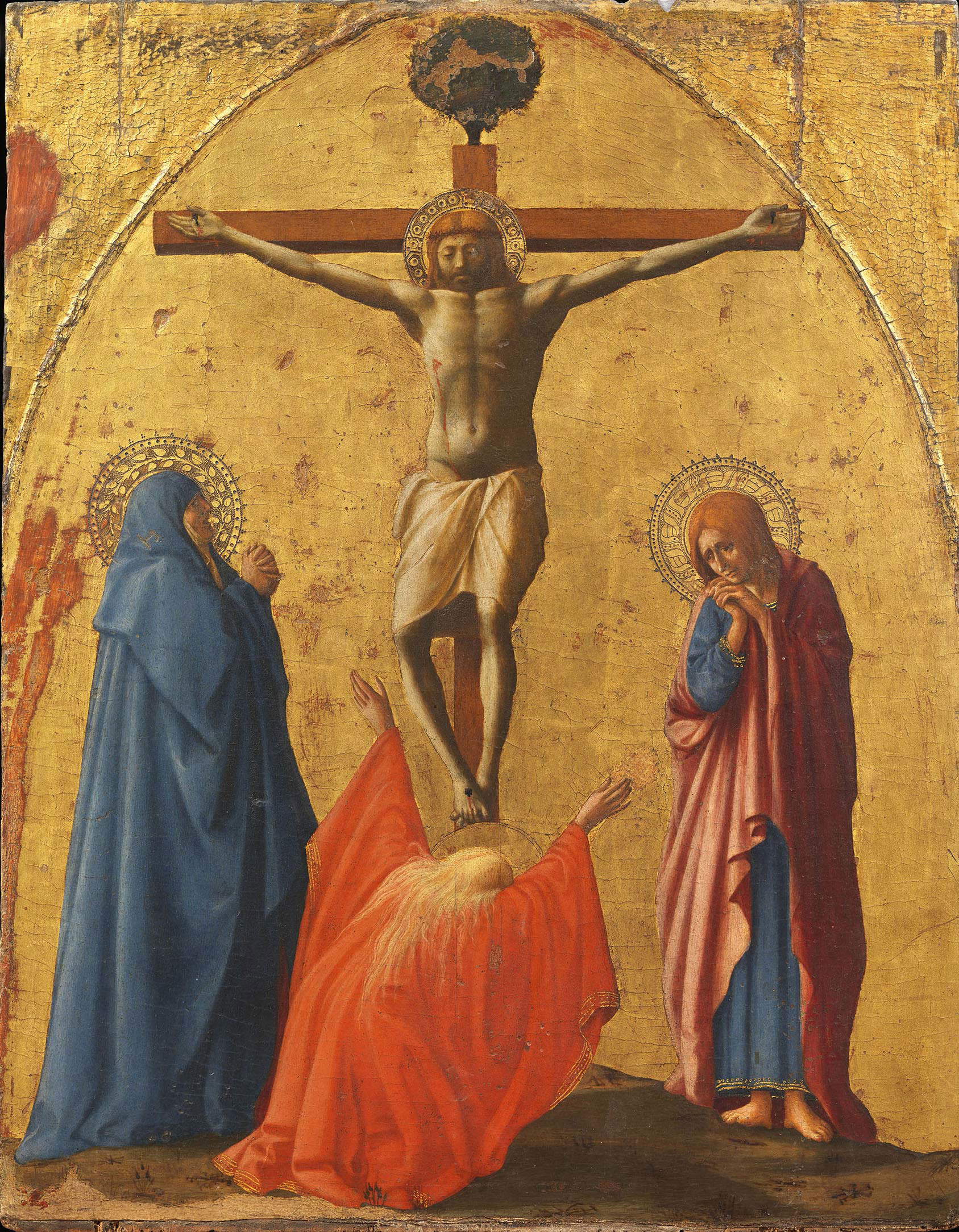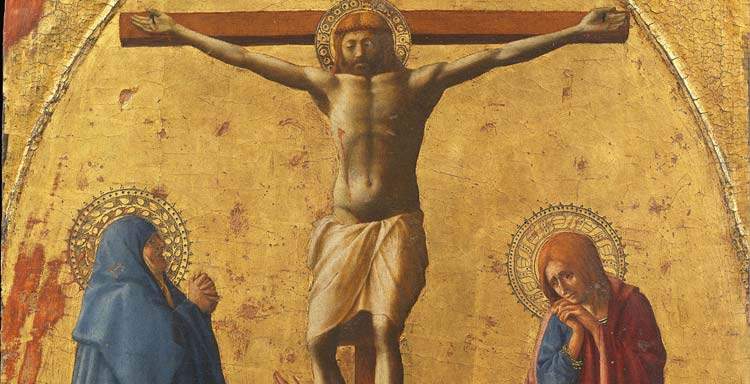From Feb. 22 to May 7, 2023, the Museo Diocesano “Carlo Maria Martini” in Milan will host one of the most important masterpieces by Masaccio (San Giovanni Valdarno, 1401 - Rome, 1428), an artist who revolutionized the history of 15th-century Italian painting. It is the Crucifixion, now housed at the Museo e Real Bosco di Capodimonte in Naples, a panel once the pinnacle of the polyptych made in 1426 on commission by the notary ser Giuliano di Colino degli Scarsi da San Giusto for his chapel in the church of Santa Maria del Carmine in Pisa, then dismembered as early as the end of the 16th century. The exhibition, curated by Nadia Righi, director of the Diocesan Museum of Milan, and Alessandra Rullo, curator of the 13th, 14th and 15th century paintings and sculptures department of the Capodimonte Museum and Real Bosco, under the patronage of the City of Milan, is dedicated to Alberto Crespi, a refined collector who recently passed away and who donated his important collection of forty-one works on a gold background to the Diocesan Museum in 1999.
In a space defined by the precious gold background, the panel presents the Madonna, St. John the Evangelist and Mary Magdalene mourning the Crucified Christ. Masaccio interprets the drama by depicting a profoundly human grief, concentrating on only a few essential elements: the contracted hands protruding from the massive body of the Madonna, wrapped in a broad blue mantle, the hands brought to the face of the mourning St. John, but, above all, the arms raised in an irrepressible motion of anguish of a faceless Mary Magdalene, depicted kneeling with her back to her. Christ, painted frontally, with his head recessed on his shoulders assuming a view from below, rendered with skillful foreshortening also through the shortening of his legs, succeeds in suggesting the sorrowful humanity of a body abandoned to death. The figures, modeled with strong contrasts of light and shadow, are placed in a real space despite the golden background, the scene of a dramatic event that takes place before the viewers’ eyes.

The installation, curated by architects Alessandro Colombo and Paola Garbuglio, includes a video installation that reconstructs in life size the layout of the polyptych, which was already dismembered at the end of the 16th century. Eleven panels were traced thanks to Vasari’s description of them in the second edition of the Lives in various museums around the world, such as the National Gallery in London, where the central panel the Madonna Enthroned with Child and Angels is kept, the Staatliche Museen in Berlin, the National Museum in Pisa or the Getty Museum in Malibu; other panels are still missing.
The itinerary is intended to suggest a slow approach to the painting by offering food for thought, insights into Masaccio, the Polyptych, the iconography and comparisons with other works created by the artist. For the occasion, in the Gold Backgrounds section of the Crespi Collection of the Diocesan Museum in Milan, art-historical apparatuses will delve into the history of the collection and the technique of the gold background. A Dario Cimorelli editore catalog accompanies the exhibition.
The silk draperies that enrich the installation were provided by Cocccon, thanks to Studio Ciuffreda-Guardini. With a view to shared sustainability, some of the fabrics used for the exhibition Charity and Beauty held last December at Palazzo Marino in Milan were reused. The cloths are made of silk defined as “nonviolent” because it is obtained through a special process that is started only after the transformation of the silkworm into a butterfly, avoiding interrupting its metamorphosis. This preserves the life of the worms, which are not suppressed in order to obtain a larger quantity of yarn.
The exhibition can be visited from Tuesday to Sunday from 10 a.m. to 6 p.m. Tickets: full 9 euros, reduced 7 euros, schools and oratories 4 euros. For all information you can visit the website of the Diocesan Museum of Milan.
 |
| Milan, Masaccio's Crucifixion arrives in transfer from Capodimonte |
Warning: the translation into English of the original Italian article was created using automatic tools. We undertake to review all articles, but we do not guarantee the total absence of inaccuracies in the translation due to the program. You can find the original by clicking on the ITA button. If you find any mistake,please contact us.